- Manuscript
- » Manuscript
- » CALL FOR ABSTRACTS
- Home
Manuscript Submission
Submission of Manuscripts for Proceedings
The submitted regular manuscripts will be published in JNN, SAM, JBT, Thin Solid Film, PST, PREX and ASCT journals after peer reviews.
In order to be included in the journals, at least one of the authors should attend the conference and make a presentation in the assigned session.
The manuscripts should be prepared in MS-Word format.
The registration fee does not include the publication charge. The accepted manuscript will be published in the journals with a fee
(The exact fee will be notified later.)
The deadline for submitting your manuscripts in this conference for all journals is the 31th of August 2018.
The submission deadline for PST is extended to September 30, 2018.
Please check the journal abstracting and indexing by yourself.
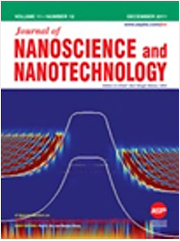
Scope & Topics
×
Aims and Scope
Journal of Nanoscience and Nanotechnology (JNN) is a multidisciplinary peer-reviewed journal with a wide-ranging coverage, consolidating research activities in all areas of nanoscience and nanotechnology into a single and unique reference source. JNN is the first cross-disciplinary journal to publish original full research articles, rapid communications of important new scientific and technological findings, timely state-of-the-art reviews with author's photo and short biography, and current research news encompassing the fundamental and applied research in all disciplines of science, engineering and medicine.
TOPICS ON NANOSCIENCE AND NANOTECHNOLOGY INCLUDE:
Synthesis of Nanostructured and Nanoscale Materials
Nanofabrication and Processing of Nanoscale Materials and Device
Atomic and Nanoscale Characterization of Functional Materials and Bio-assemblies
Nanoprobes, Properties of Nanoscale Materials, Nanocatalysis
Nanocomposites, Nanoparticles, Nanocrystalline Materials, and Nanoclusters
Superlattices, Quantum Dots, Quantum Wires, Quantum Wells, Nanoscale Thin Films
Fullerenes, Nanotubes, Nanorods, Molecular Wires, Molecular Nanotechnology
Supramolecules, Dendrimers, Self-Assemblies, Low-dimension Structures
Nanophysics, Nanoelectronics, Nano-Optics, Nanomagnetism and Nanodevices
Atomic Manipulation, Computational Nanotechnology, Molecular Nanoscience
Nanochips, Nanosensors and Nano-integration, Nanofluidics, Nanomachining
Structure Analysis at Atomic, Molecular, and Nanometer range
Nanorobotics, Nanotribology, and Novel Applications of Nanostructured Materials
Nanobiotechnology, Biochemical Assemblies, BioMEMS, Biomimetic Materials
Nanoscale Genomics, DNA Sequencing, Nanomedicines, Drug Delivery, Biomedical Nanotechnolog
Journal of Nanoscience and Nanotechnology (JNN) is a multidisciplinary peer-reviewed journal with a wide-ranging coverage, consolidating research activities in all areas of nanoscience and nanotechnology into a single and unique reference source. JNN is the first cross-disciplinary journal to publish original full research articles, rapid communications of important new scientific and technological findings, timely state-of-the-art reviews with author’s photo and short biography, and current research news encompassing the fundamental and applied research in all disciplines of science, engineering and medicine.
Please do not submit the manuscript directly to Journal of Nanoscience and Nanotechnology
Manuscripts should be longer than 4 journal pages/paper
Please prepare for the Cover Letter and submit it together with your full paper
Please prepare your manuscript according to standard Author Guide.
Note: Please make sure that you indicate (1) your abstract submission number and (2) approved abstract number and (3) registration/payment information. Manuscripts submitted without those information will not be handled.
• Publication Fee: USD 550 per paper
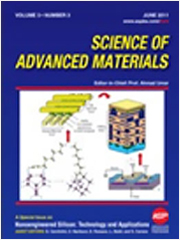
Scope & Topics
×
Aims and Scope
Science of Advanced Materials (SAM) is an interdisciplinary peer-reviewed journal consolidating research activities in all aspects of advanced materials in the fields of science, engineering and medicine into a single and unique reference source. SAM provides the means for materials scientists, chemists, physicists, biologists, engineers, ceramicists, metallurgists, theoreticians and technocrats to publish original research articles as reviews with author's photo and short biography, full research articles and communications of important new scientific and technological findings, encompassing the fundamental and applied research in all latest aspects of advanced materials. Authors will receive the following benefits:
Electronic submission of articles
Fast reviews
Rapid times to publication
No page charges
Free color where justified
Distinguished editorial board
Availability in print and online editions
RESEARCH TOPICS COVERED:
All experimental and theoretical research aspects of advanced material with an interdisciplinary approach will be covered. Synthesis, fabrication, processing, spectroscopic characterization, physical properties, and applications of all kinds of inorganic and organic advanced materials including metals, semiconductors, superconductors, ceramics, glasses, ferroelectrics, low and high-k dielectrics, sol-gel materials, liquid crystals, organic materials, polymers, electronic and photonic materials, catalysts, biomaterials, nanostructured materials, confined systems, supramolecular and self-asemblies, low-dimensional materials, magnetic materials, etc., their applications in next generation of electronic, photonic and biological devices, energy storage and conversion technologies, theoretical and computational aspects.
Science of Advanced Materials (SAM) is an interdisciplinary peer-reviewed journal consolidating research activities in all aspects of advanced materials in the fields of science, engineering and medicine into a single and unique reference source. SAM provides the means for materials scientists, chemists, physicists, biologists, engineers, ceramicists, metallurgists, theoreticians and technocrats to publish original research articles as reviews with author’s photo and short biography, full research articles and communications of important new scientific and technological findings, encompassing the fundamental and applied research in all latest aspects of advanced materials.
Please do not submit the manuscript directly to Science of Advanced Materials
Manuscripts should be longer than 4 journal pages/paper
Please prepare for the Cover Letter and submit it together with your full paper
Please prepare your manuscript according to standard Author Guide.
Note: Please make sure that you indicate (1) your abstract submission number and (2) approved abstract number and (3) registration/payment information. Manuscripts submitted without those information will not be handled.
• Publication Fee: USD 550 per paper
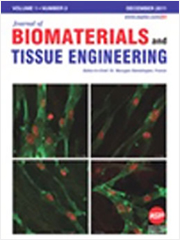
Scope & Topics
×
Aims and Scope
Journal of Biomaterials and Tissue Engineering (JBT) is being created as an international peer-reviewed journal that covers all aspects of biomaterials, tissue engineering and regenerative medicine. The journal has been developed to create a new forum of scientific publications at the interface of biomaterials, tissue engineering and drug delivery research. JBT publishes original rapid communications, full research papers and timely state-of-the-art reviews (with author's photo and biography) encompassing the fundamental and applied research in the fields of biomaterials, tissue engineering and regenerative medicine. Rapid communications on new findings with breakthrough results will be considered for accelerated publication. The journal also publishes thematic special issues featuring selected peer-reviewed research papers from major conferences in the related disciplines. To speed up the reviewing process, we will provide on-line refereeing of all articles submitted in electronic form. Authors will receive the following benefits:
Electronic submission of articles
Fast reviews
Rapid times to publication
No page charges
Free color where justified
Distinguished editorial board
Availability in print and online editions
RESEARCH TOPICS COVERED:
The journal focuses on the broad spectrum of research topics regarding theoretical and experimental aspects of biomaterials and tissue engineering including polymeric biomaterials, metallic biomaterials, ceramic biomaterials, composites, biomimetics, biomolecular assembly, nanobiomaterials, synthesis, characterization, chemical, physical, mechanical, biological and toxicological properties, byproducts, bioimplants and medical devices, biofilms, bioimaging, BioMEMS/NEMS, biosensors, performance of biomaterials, physiology and pathology, biomechanics, biological microarrays, surface functionalization, fibers, tissue scaffolds, porous biomaterials, combinatorial gradients, micro-/nanofabrication systems, cell patterning, cellular microenvironments, stem cell engineering, tissue engineering and modeling, artificial organs, hard and soft tissue applications, tissue interfaces, interactions between biomaterials, blood, cells, tissues, and organs, DNA technology, protein and drug delivery, gene delivery, molecular therapy, molecular biopharmaceutics, drug screening and delivery systems, polymeric drugs and polymeric drug conjugates, prodrugs, and medical nanotechnology related to the molecular design concepts, synthesis, production, characterization, nanomedecine as diagnostics and therapeutics tools, treatment of all types of diseases, regenerative medicine and nanomedicine, clinical performance, medical and clinical evaluation of drugs and delivery systems in vitro and in vivo.
Journal of Biomaterials and Tissue Engineering (JBT) is being created as an international peer-reviewed journal that covers all aspects of biomaterials, tissue engineering and regenerative medicine.
The journal has been developed to create a new forum of scientific publications at the interface of biomaterials, tissue engineering and drug delivery research. JBT publishes original rapid communications, full research papers and timely state-of-the-art reviews (with author's photo and biography) encompassing the fundamental and applied research in the fields of biomaterials, tissue engineering and regenerative medicine.
Rapid communications on new findings with breakthrough results will be considered for accelerated publication. The journal also publishes thematic special issues featuring selected peer-reviewed research papers from major conferences in the related disciplines.
Please do not submit the manuscript directly to Journal of Biomaterials and Tissue Engineering
Manuscripts should be longer than 4 journal pages/paper
• Publication Fee: USD 550 per paper
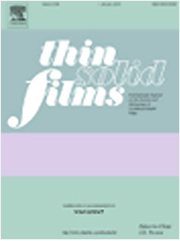
Scope & Topics
×
Scope
The scope of Thin Solid Films is indicated by, but not limited to, the following topical subheadings:
Synthesis and Characterization
Surfaces, Interfaces, and Colloidal Behaviour
Metallurgical, Protective, and Hard Layers
Mechanics and Nanomechanics of Thin Layers
Electronics, Optics, and Opto-electronics
Magnetics and Magneto-optics
Superconductivity
Langmuir—Blodgett, Biological, and Related Films
Thin Film Devices, Sensors, and Actuators
Condensed Matter Film Behaviour
Thin Solid Films is an international journal which serves scientists and engineers working in the fields of thin-film synthesis, characterization, and applications. The field of thin films, which can be defined as the confluence of materials science, surface science, and applied physics, has become an identifiable unified discipline of scientific endeavor.
• Accepted papers for ICMAP 2018 proceedings will be published in the online form of Virtual Special Issue(VSI) with no hard copy version for faster processing.
VSI is an online-only grouping of Special Issue articles traditionally assigned to a single Special Issue. Each article in a VSI is assigned a unique identifier and then published in a regular journal issue as soon as available. The unique identifier allows us to simultaneously add the article to a VSI on ScienceDirect which is gradually built up as individual articles are published online. Articles grouped together in a VSI retain their original citation details.
On ScienceDirect, a VSI is listed alongside regular journal issues and is easily accessible and navigable. A VSI homepage includes a Guest Editor listing, table of contents and other data relevant to the VSI. A VSI speeds up the publication of individual articles as, unlike the publication process for conventional Special Issue articles, a VSI does not need to wait for the final article to be ready before publication. The benefits of VSIs include:
- Reduced overall publication times
- Reduced waiting time & increased author (of SI papers)
- Lower risk of error for incorrect publication of SI content due to increased flexibility for moving/adding/removing items from VSIs, without affecting citation details
• Publication Fee: FREE
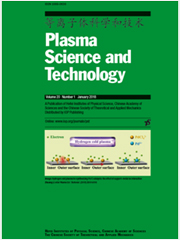
Scope & Topics
×
Scope
Plasma Science and Technology is an international journal published in China by the Institute of Plasma Physics, CAS and the Chinese Society of Theoretical and Applied Mechanics. It is distributed outside China and published online by IOP Publishing.
PST solicits strong manuscripts, as Research Letters, Research Articles, and Topical Review Articles, to be refereed to join a growing number of reports of increasing influence in this field.
Frequency: 12 issues per year.
Subject coverage: Plasma Science and Technology reports novel experimental and theoretical results, progress of interdisciplinary and application sciences in the fields related to plasma physics. Specific areas of interest include:
basic plasma phenomena
plasma theory and modelling
magnetically confined plasma
inertially confined plasma
Plasma diagnostics, plasma instrumentation and facilities
low temperature plasma
astrophysics and space plasma
plasma technology
fusion engineering
Plasma Science and Technology (PST) journal assists in advancing plasma science and technology by reporting important, novel, helpful and thought-provoking progress in this strongly multidisciplinary and interdisciplinary field, in a timely manner. This field encompasses foundational plasma phenomena; low-temperature plasmas; magnetically confined plasmas; inertially confined plasmas; astrophysics and space plasmas; and interdisciplinary science of these; and the engineering and technology development and application from them.
PST journal began publication in December 1999, the journal is sponsored jointly by the Institute of Plasma Physics of the Chinese Academy of Sciences, and the Chinese Society of Theoretical and Applied Mechanics. The journal joined the Science Citation Index in 2003, the Engineering Index in 2006, and became published online by IOP Publishing Ltd. in 2006.
PST solicits strong manuscripts, as Letters, Articles, and Topical Reviews, to be referred to join a growing number of reports of increasing influence in this field.
Please prepare your manuscript according to standard Author Guide.
• Publication Fee: FREE
The submission deadline for PST is extended to September 30, 2018.
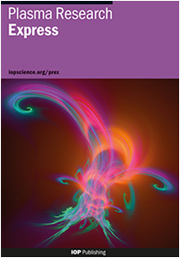
Scope & Topics
×
Scope
Plasma Research Express is a broad, multidisciplinary journal devoted to publishing
new experimental and theoretical research covering all areas of fundamental,
engineering and applied plasma science at low and high temperatures.
The journal is
committed to fast review and publication of research in all areas of plasma science,
including interdisciplinary fields, and operates a transparent editorial selection and
feedback process focused on the scientific rigour of the work, rather than its perceived
impact or novelty. It is characterized by article length flexibility and a fast-track peer-review process,
topics of particular interest include:
Plasma science and technology for interdisciplinary applications to materials
science, nano technology, micro-optics, medicine and biology, chemistry and processing, and environmental technology
High temperature plasmas and controlled fusion
Laser-plasma, high energy density (HED) plasma science, and warm dense matter
Plasma diagnostics, plasma instrumentation and facilities
Plasma modelling and simulations
Nonlinear phenomena in natural and laboratory plasmas
Design rules and operation mechanisms of plasmas sources for industrial applications
Instabilities and turbulence in astrophysical and space plasmas
Fundamental principles and data for plasma-surface interactions
Electromagnetic interactions of charged particles and beams
Data-driven plasma science
PREX welcome contributions reporting the underlying physics mechanism and their
wide implications through the viewpoint of plasma science to connect the
interdisciplinary applications of a wide range of temperature and density of plasmas.
Authors are encouraged to submit scientific papers of the work presented in the ICMAP2018/APCPST2018/ISPB2018 to a new journal by Institute of Physics(IOP).
Representing a new addition to IOP's world-leading plasmas portfolio, Plasma Research Express (PREX) is a broad, multidisciplinary journal devoted to publishing new experimental and theoretical research covering all areas of fundamental, engineering and applied plasma science at low and high temperatures.
"Plasma Research Express is aimed at all plasma scientists, in all parts of the world and will build upon the world leading reputation IOP Publishing already has in plasma physics. Through the viewpoint of plasma science the journal's multidisciplinary coverage will reflect the complete breadth of how research in the field now intersects with the physics, astrophysics, materials, chemistry, biomedical and engineering communities.
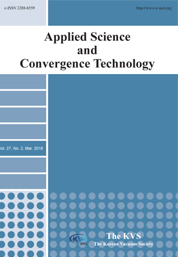
Scope & Topics
×
Scope
Aims and Scope
Applied Science and Convergence Technology, (ASCT, e-ISSN 2288-6559) is an international peer-reviewed online journal publishing research articles. It aims to enhance the knowledge of vacuum and related science & technologies by providing research information with easy access via web. ASCT has six major fields: vacuum technology, surface and interface science, plasma and display, semiconductors and thin films, nano and biointerface, and energy technology. It was first issued by the Korean Vacuum Society in 1992 under the name of Journal of Korean Vacuum Science & Technology (JKVST). ASCT is the continued on-line journal of the JKVST since 2014. It is listed as a top prestigious journal of Korea Research Foundation.
ASCT accepts research paper, review paper, rapid communications, brief reports and technical notes. It publishes articles immediately after the review process if manuscript is determined as acceptance. All articles must be submitted via online manuscript submission system (http://www.e-asct.org) and peer review is also done electronically. All of submitted manuscripts should be written in English. The official title of the journal is Applied Science and Convergence Technology and its abbreviation is ASCT. Submission is open to any researcher who deals the subject in the above-mentioned six major fields.
Applied Science and Convergence Technology, (ASCT, e-ISSN 2288-6559) is an international peer-reviewed online journal publishing research articles. It aims to enhance the knowledge of vacuum and related science & technologies by providing research information with easy access via web. ASCT has six major fields: vacuum technology, surface and interface science, plasma and display, semiconductors and thin films, nano and biointerface, and energy technology. It was first issued by the Korean Vacuum Society in 1992 under the name of Journal of Korean Vacuum Science & Technology (JKVST). ASCT is the continued on-line journal of the JKVST since 2014. It is listed as a top prestigious journal of Korea Research Foundation.
ASCT accepts research paper, review paper, rapid communications, brief reports and technical notes. It publishes articles immediately after the review process if manuscript is determined as acceptance. All articles must be submitted via online manuscript submission system (http://www.e-asct.org) and peer review is also done electronically. All of submitted manuscripts should be written in English. The official title of the journal is Applied Science and Convergence Technology and its abbreviation is ASCT. Submission is open to any researcher who deals the subject in the above-mentioned six major fields.
• Publication Fee: KRW 350,000 per paper








